Best Spelling Strategies for Effective Teaching
This post may contain affiliate links. As an Amazon affiliate, we earn from qualifying purchases.
Want to help your students become confident spellers? Learn SEVEN powerful spelling strategies for effective teaching! These research-backed techniques are easy to implement, helping students master spelling tricky words with confidence and accuracy.
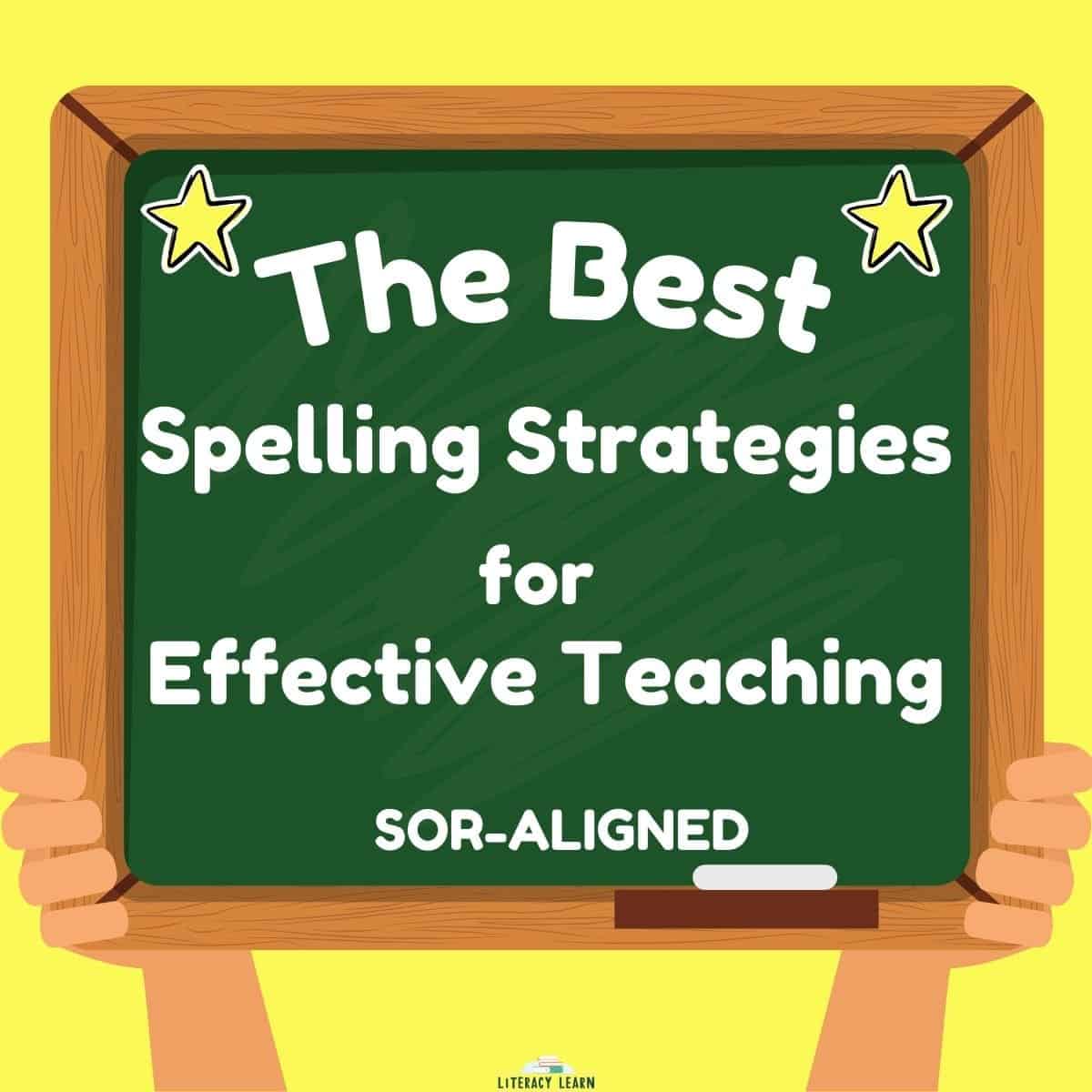
Teaching Spelling Strategies
English is a morphophonemic language, which is just a fancy way of saying that word spellings are influenced by both sound (phonemes) and meaning/structure (morphemes).
And that’s why teaching both phonics and explicit morphology explicitly is so essential!
Phonics instruction helps students connect sounds to letters when spelling, but since meaning also plays a big role in how words are spelled, they need extra strategies beyond just phonics.
We’re sharing seven powerful strategies to help your students master even the trickiest words!
By teaching and using these strategies, you can empower ALL students with the tools needed to spell words with confidence.
1. Heart Word Method
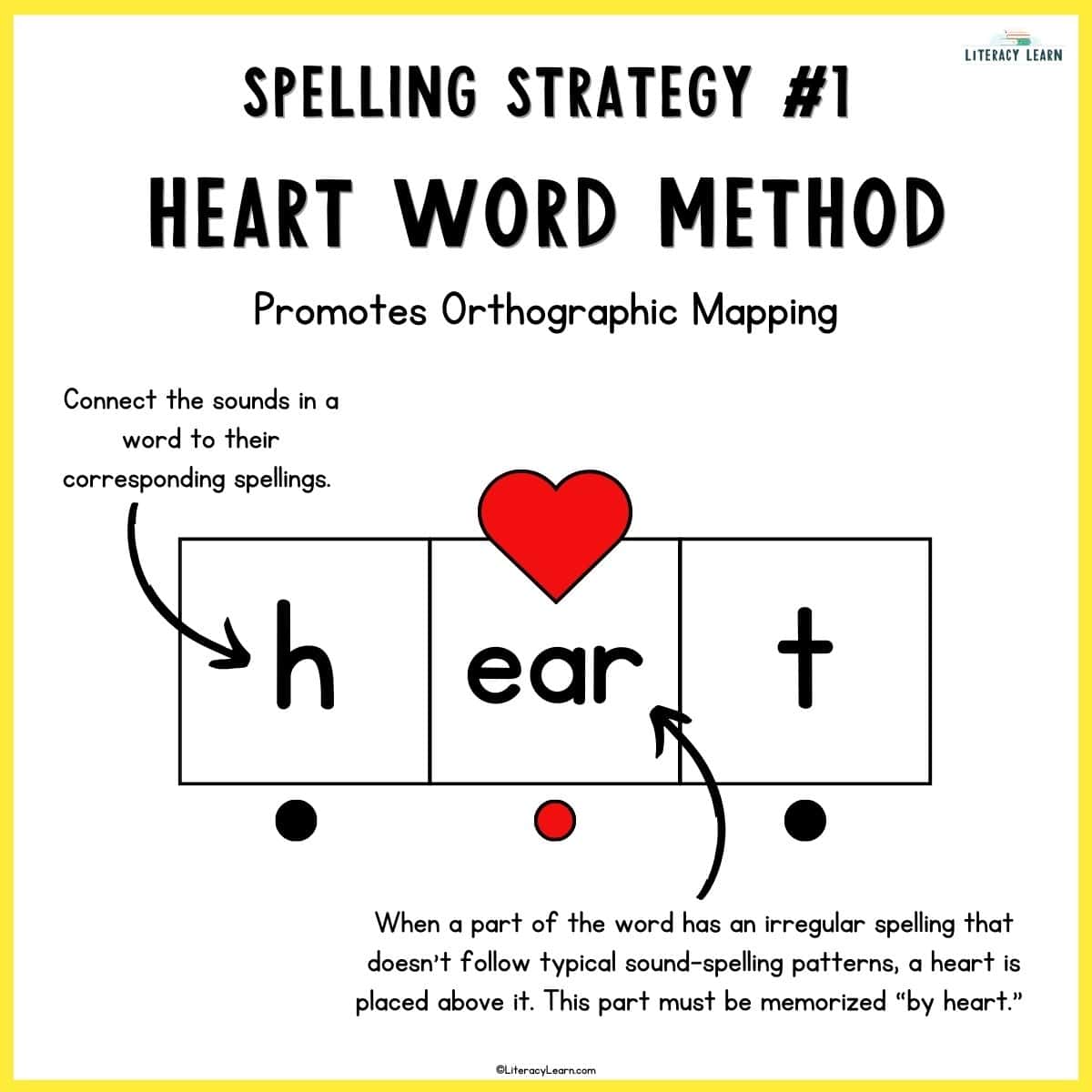
The heart word method is used to teach irregular words. It’s phonics-based and promotes orthographic mapping – the process we use to permanently store words for automatic retrieval.
When using the heart word method, kids connect the sounds in a word to their corresponding spellings. However, when a part of the word has an irregular spelling that doesn’t follow typical sound-spelling patterns, a heart symbol is placed above it.
This highlighted section is called the “heart part” — the portion of the word that must be memorized by heart.
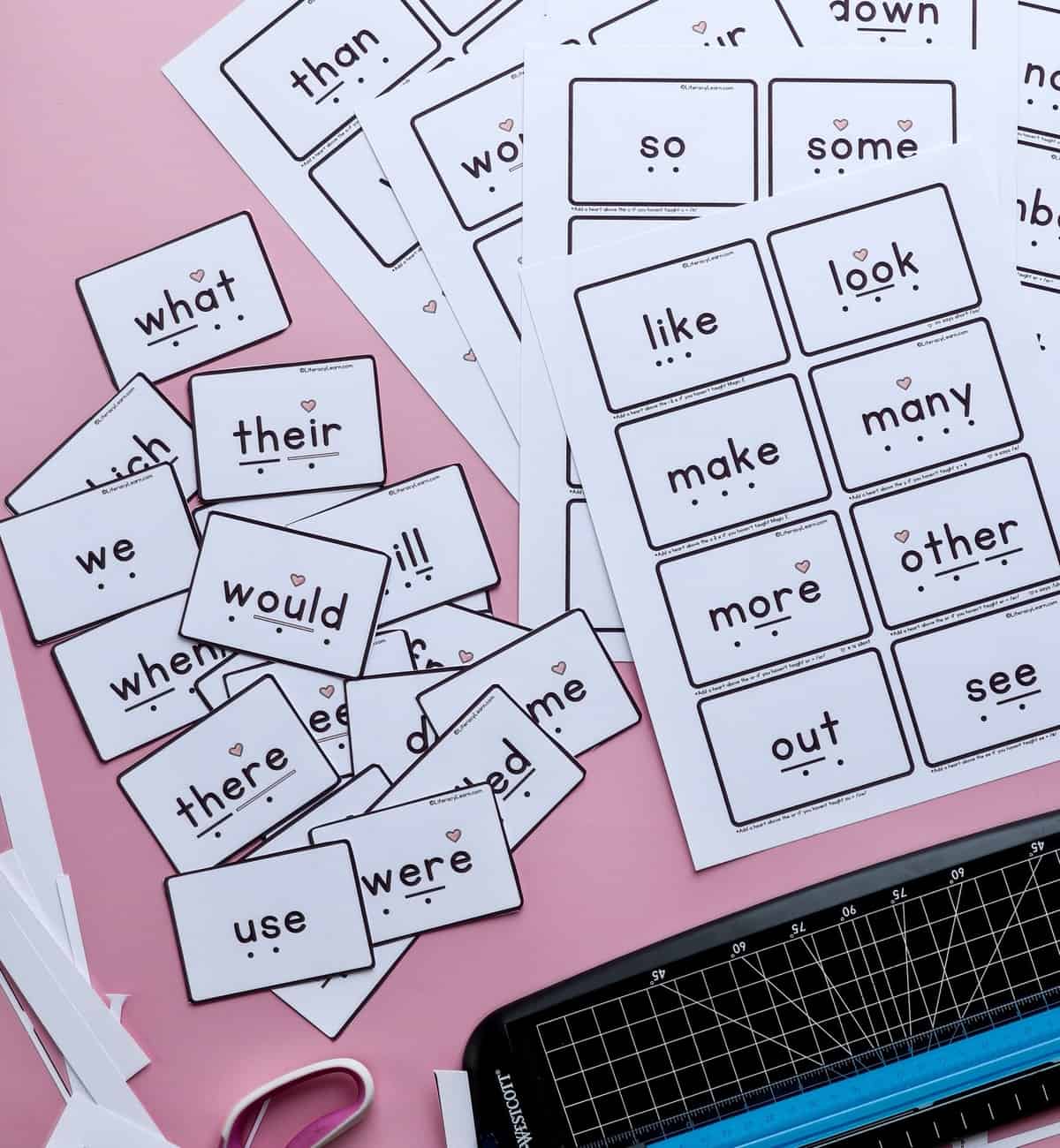
2. Break It Into Morphemes
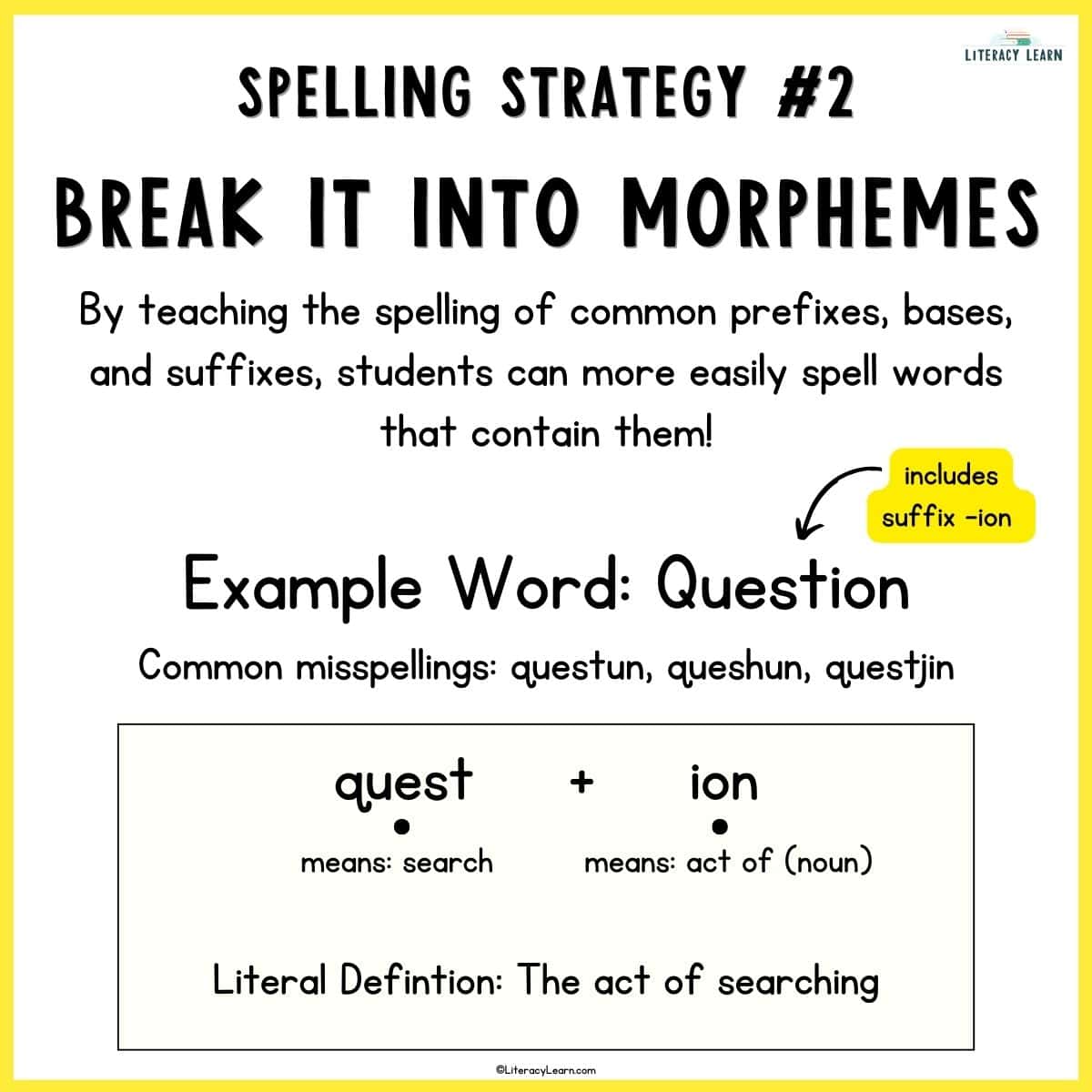
Morphemes are the smallest units of meaning in a word. They include prefixes, base words, and suffixes.
By teaching kids the spelling and meaning of common morphemes, they can more easily spell many words that contain them.
For example, teaching the suffix -ion is incredibly helpful. This suffix is often added to verbs to form nouns, such as action (from act), creation (from create), and fusion (from fuse).
When students learn that suffix -ion turns verbs into nouns, they can use this knowledge to spell many words accurately.
By breaking tricky words into their meaning-based morphemes, teachers can help students improve both their spelling and understanding of word structures. This strategy is a great bang for your buck!
Teaching Tip: When using this strategy, kids should use word sums to break words into individual morphemes.
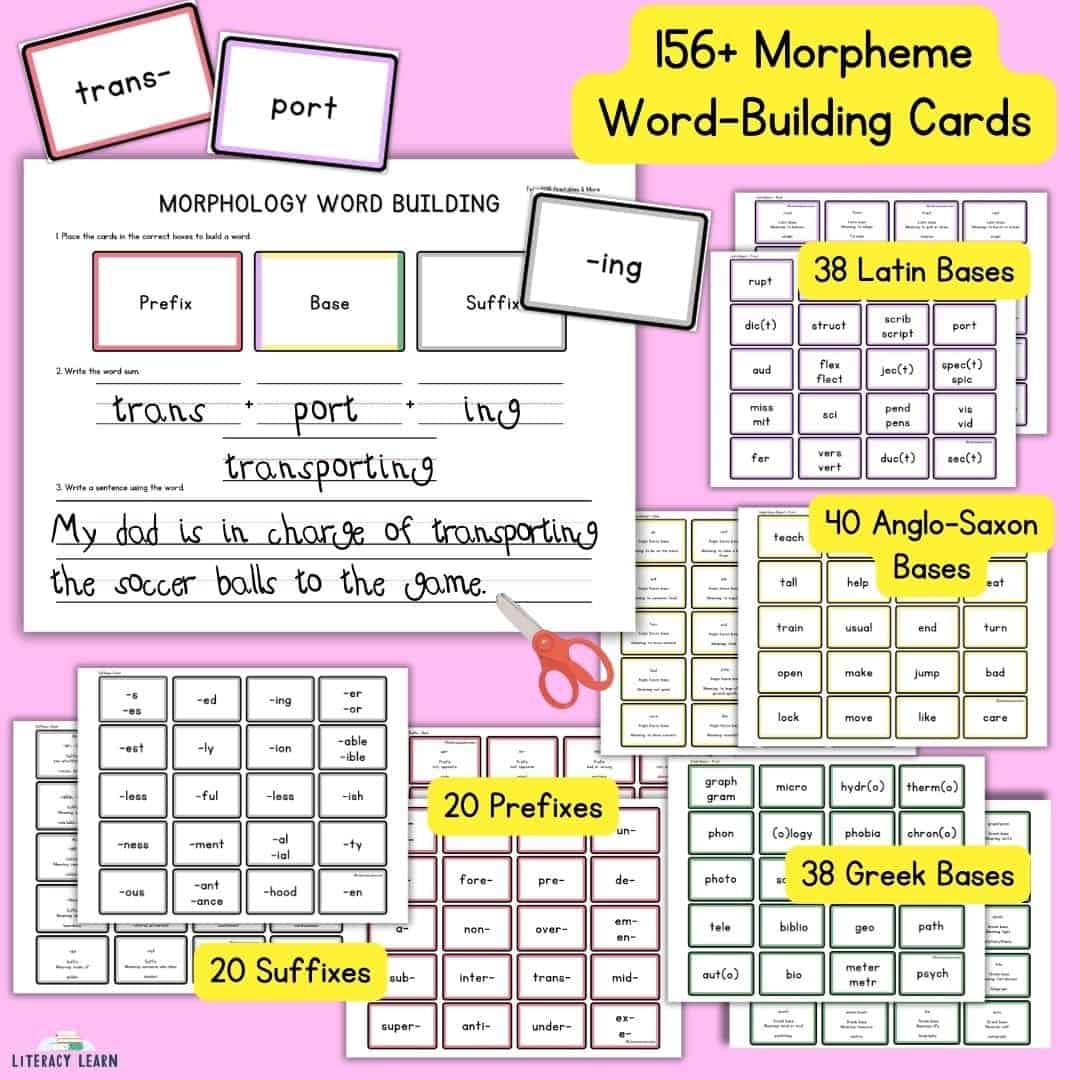
Let’s see how this works using two example words: question and tribal.
➡️ Example Word: QUESTION
Kids might spell this word questun, questshun, or questin.
But, if kids can recognize that this word includes the suffix -ion, they’ll easily be able to spell the word. By breaking this word into its morphemes, kids can easily spell this word while analyzing meaning, too!
quest (means: search)+ ion (means: act of -noun)
Literal Definition: The act of searching.
➡️ Example Word: TRIBAL
Kids might spell this word trible, triball, or tribel. Instead, let’s try breaking it into morphemes for accurate spelling.
tribe (means: tribe)+ al (means: relating to –adjective)
Literal Definition: Relating to a tribe.
3. Memory Hooks
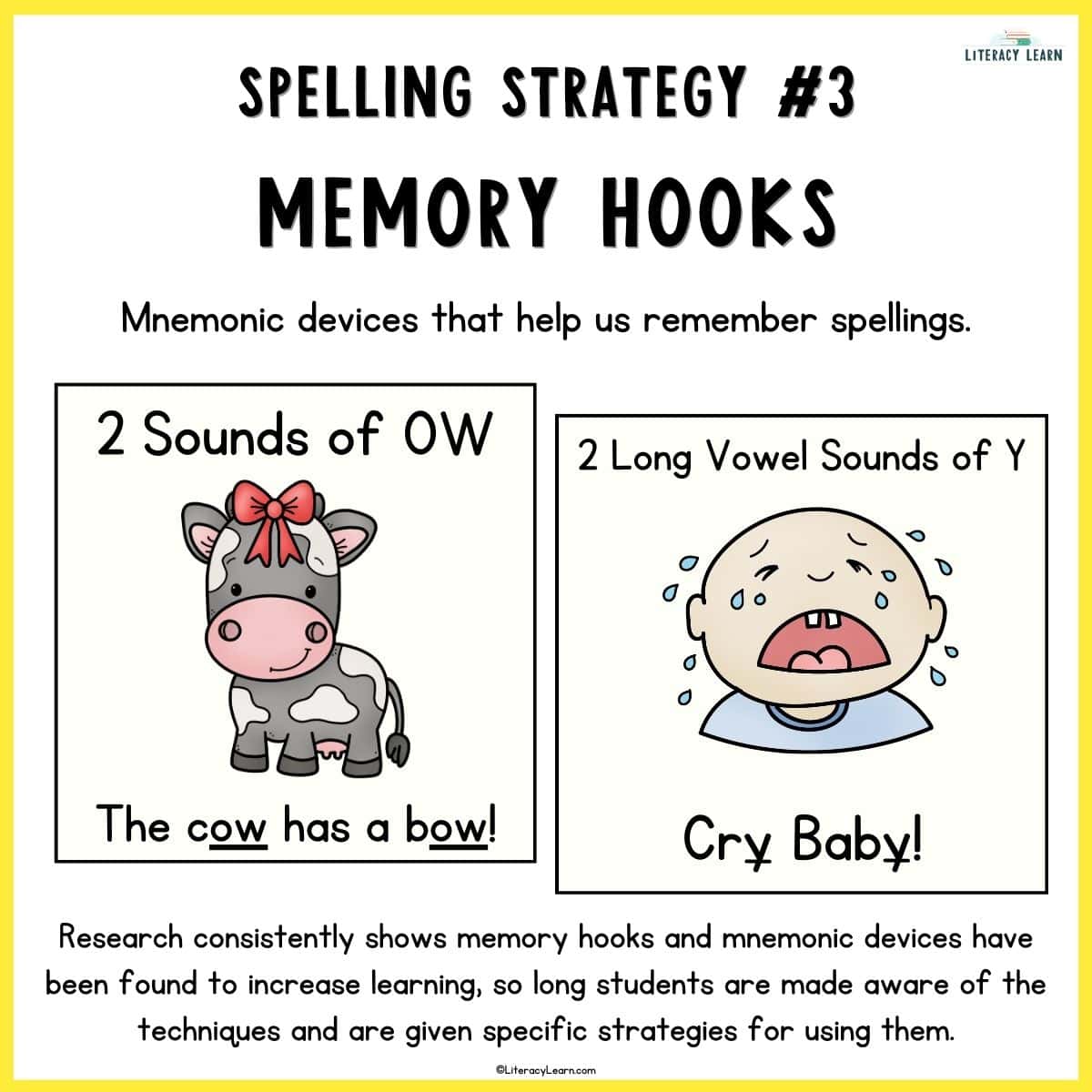
Memory hooks are a type of mnemonic device. Remember back to sixth grade math when we learned the order of operations using the phrase, “Please Excuse My Dear Aunt Sally”?
These hooks are fun and creative ways to remember tricky spellings, and they can stick with you for years, even decades!
You can use memory hooks for spelling success in two ways:
- Provide a memory hook for a word students are struggling with. Be sure to explicitly explain the memory hook and provide opportunities for repeated practice using it.
- Have students creatively develop their own memory hook. This is more of a challenge, but if they can create their own they’re more likely to remember it. Challenge kids to think of something funny, cute, or gross to remember the tricky spellings.
Here are a few fun examples:
➡️ COULD, WOULD, SHOULD – “Oh U Lucky Duck”
This popular memory hook is used for the irregular parts in the words could, would, and should. The phrase “Oh U Lucky Duck” helps kids remember the spelling the tricky part of these words.
➡️ ENVIRONMENT –“Ron cares of the enviRONment.”
The tricky part of this word is the third syllable, where the /er/ sound is spelled “ron” instead of the expected “ern.” Since the spelling doesn’t match the pronunciation, we use a memory hook: “Ron cares for the enviRONment.”
Research consistently states that memory hooks and mnemonic devices have been found to increase learning, so long students are made aware of the techniques and are given specific strategies for using them.
4. Talk Like A Robot
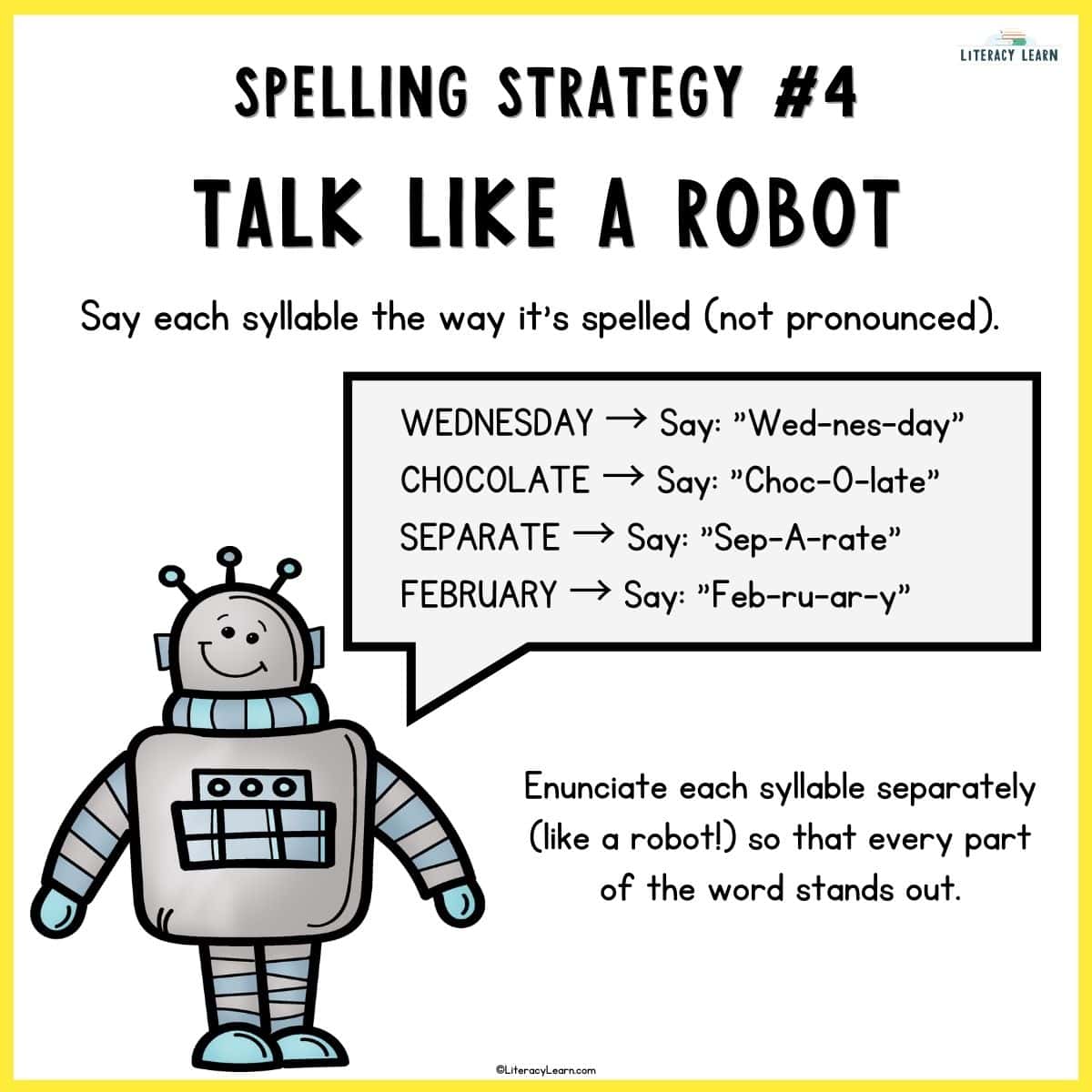
I first learned about this strategy when my daughter came home from first grade saying the word people as pe-O-ple (clearly pronouncing the long O sound in the middle of the word). And she quickly mastered the spelling of this irregular word within a few days!
Using robot speech is when we take tricky words apart by breaking them into individual syllables. We then pronounce each syllable clearly and deliberately.
Instead of blending sounds smoothly as we normally do in speech, we enunciate each syllable separately—almost like a robot—so that every part of the word stands out.
Below are some common examples:
➡️ WEDNESDAY → Say: “Wed-nes-day”
➡️ CHOCOLATE → Say: “Choc-O-late“
➡️ SEPARATE → Say: “Sep-A-rate“
➡️ FEBRUARY → Say: “Feb-ru-ar-y“
Challenge kids to really “Talk like a robot” when pronouncing each syllable and spelling these words. We never said spelling practice has to be boring! 🤖
5. Play Spelling Games
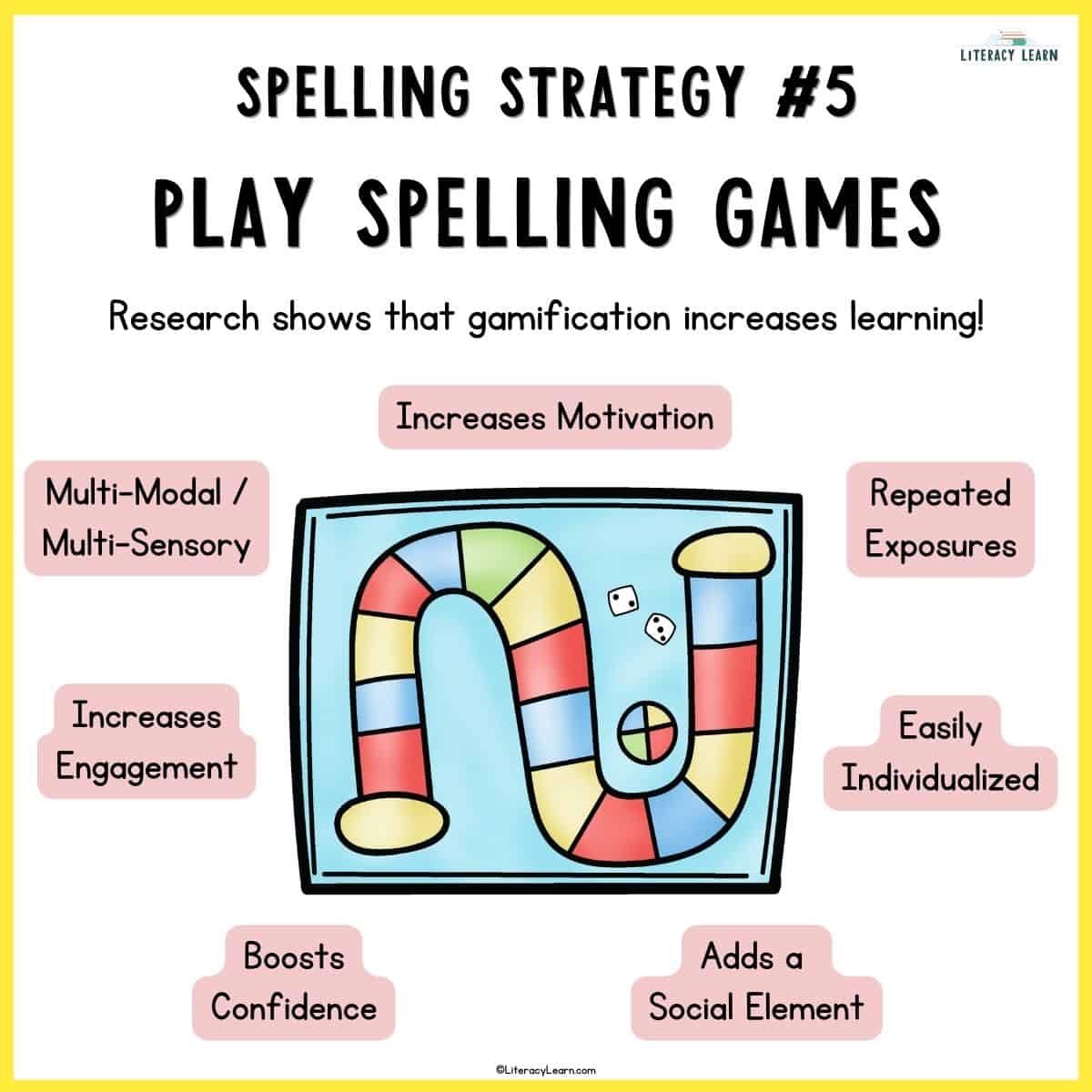
Gamification has long been supported by research to increase engagement and retention. And as a teacher with decade of classroom experience, my personal experience supports it as well!
There are multiple benefits of adding a game element to your spelling instruction:
- Increases engagement and fun
- Repeated exposures increase retention
- Can be easily individualized and differentiated
- Adds a social learning element
- Boosts confidence
- Increases motivation to master a subject
- Can be multi-modal or multi-sensory
⭐️ GET FREEBIES: Use our FREE Spelling Tic Tac Toe or Out Loud Spelling Board Game to help students practice any list of spelling words in a fun and meaningful way.
6. Teach Word Families
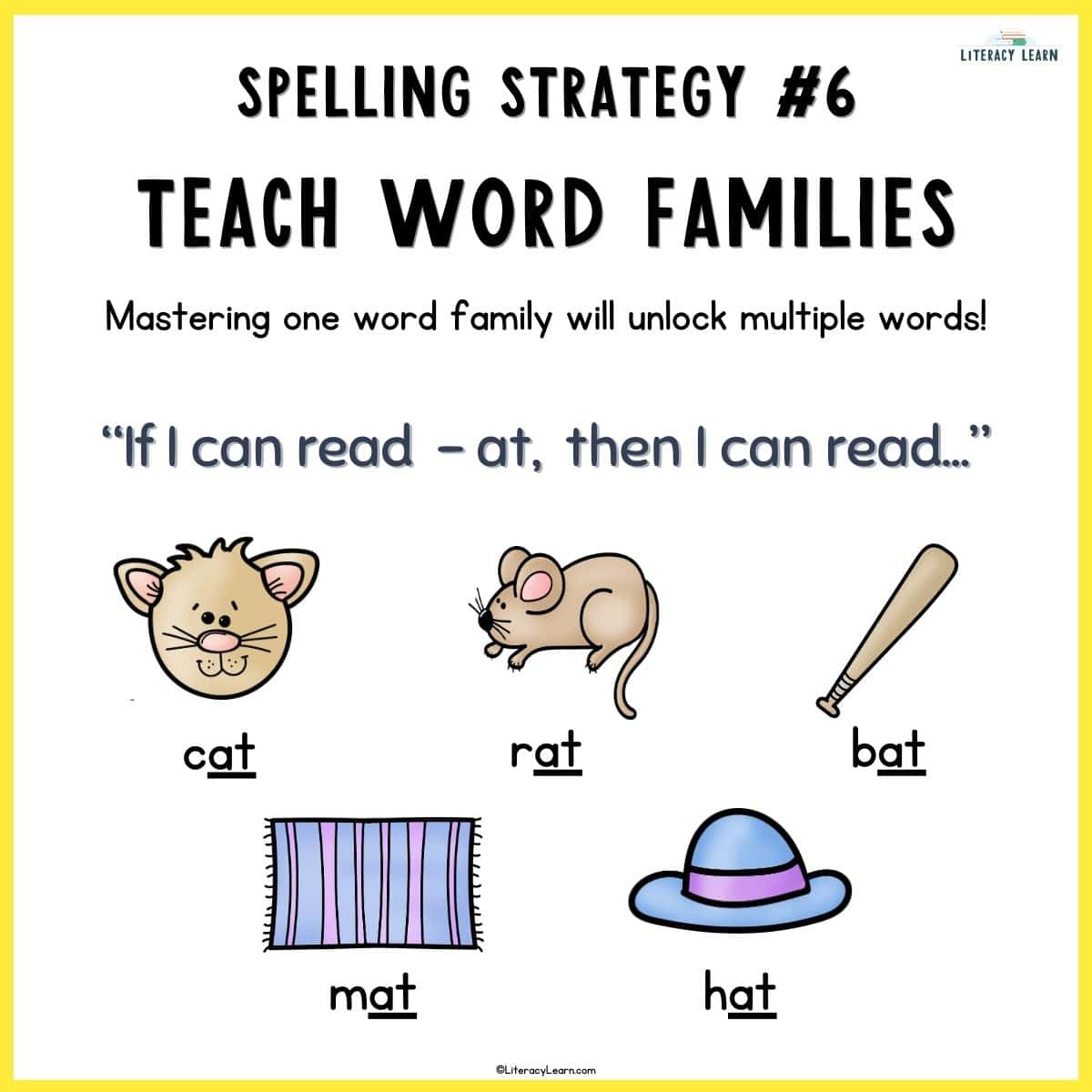
Word families are words that share the same rime (the ending string of letters), and teaching word families to young students helps to unlock multiple words at a time.
Once students know the basic consonants and short vowel sounds, they can begin blending them together to read words.
For each simple CVC word family a student learns, several (and sometimes dozens) of new words are unlocked.
I teach my students this chant: “If I can read [word family], then I can read…”
So if I was teaching the -at word family, we would say, “If I can read -at, then I can read bat, cat, mat, hat, pat, and rat.” Soon, they’ll also be able to read words like chat, flat, drat, and stat.
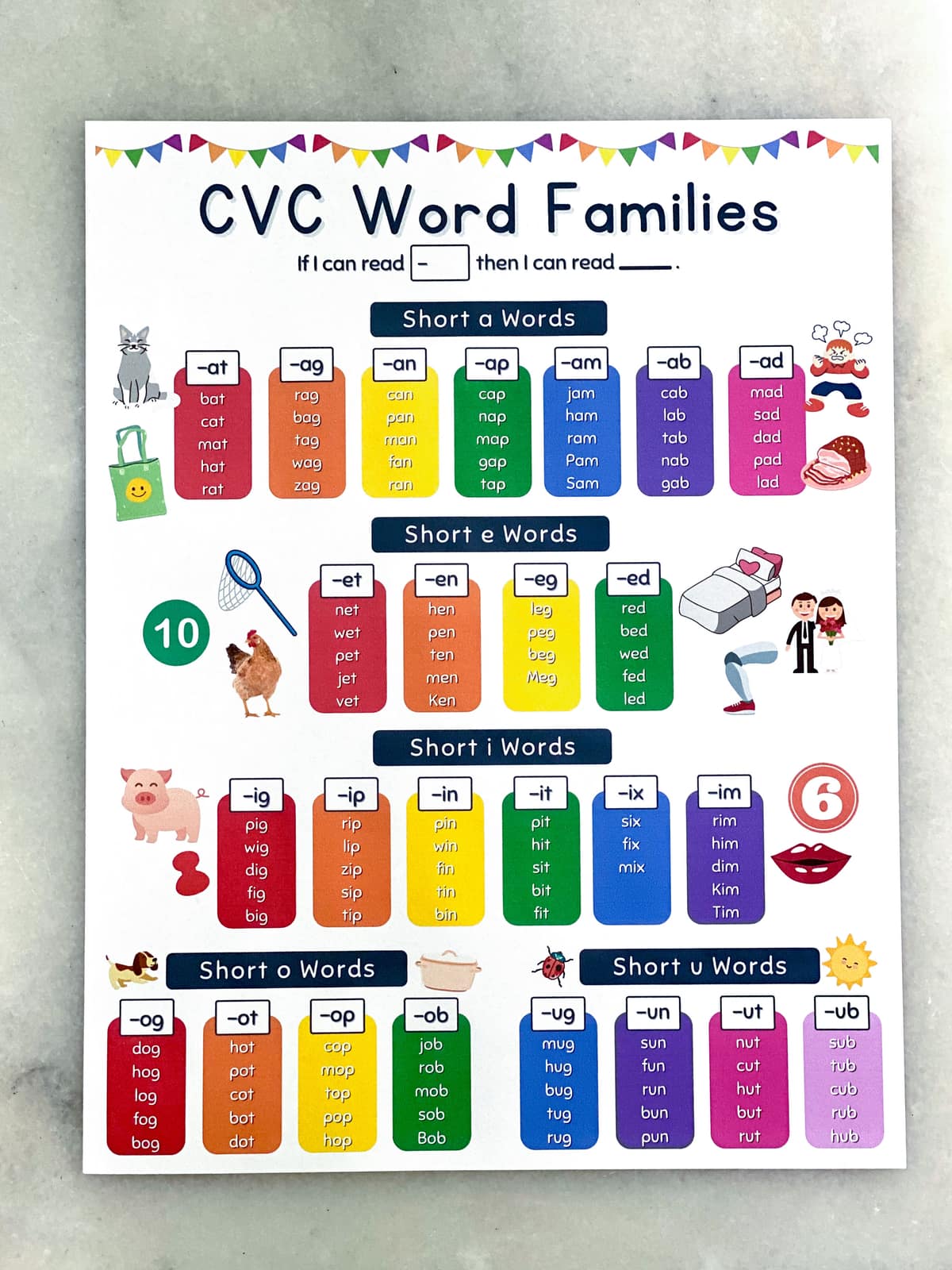
7. Use Word Sorts
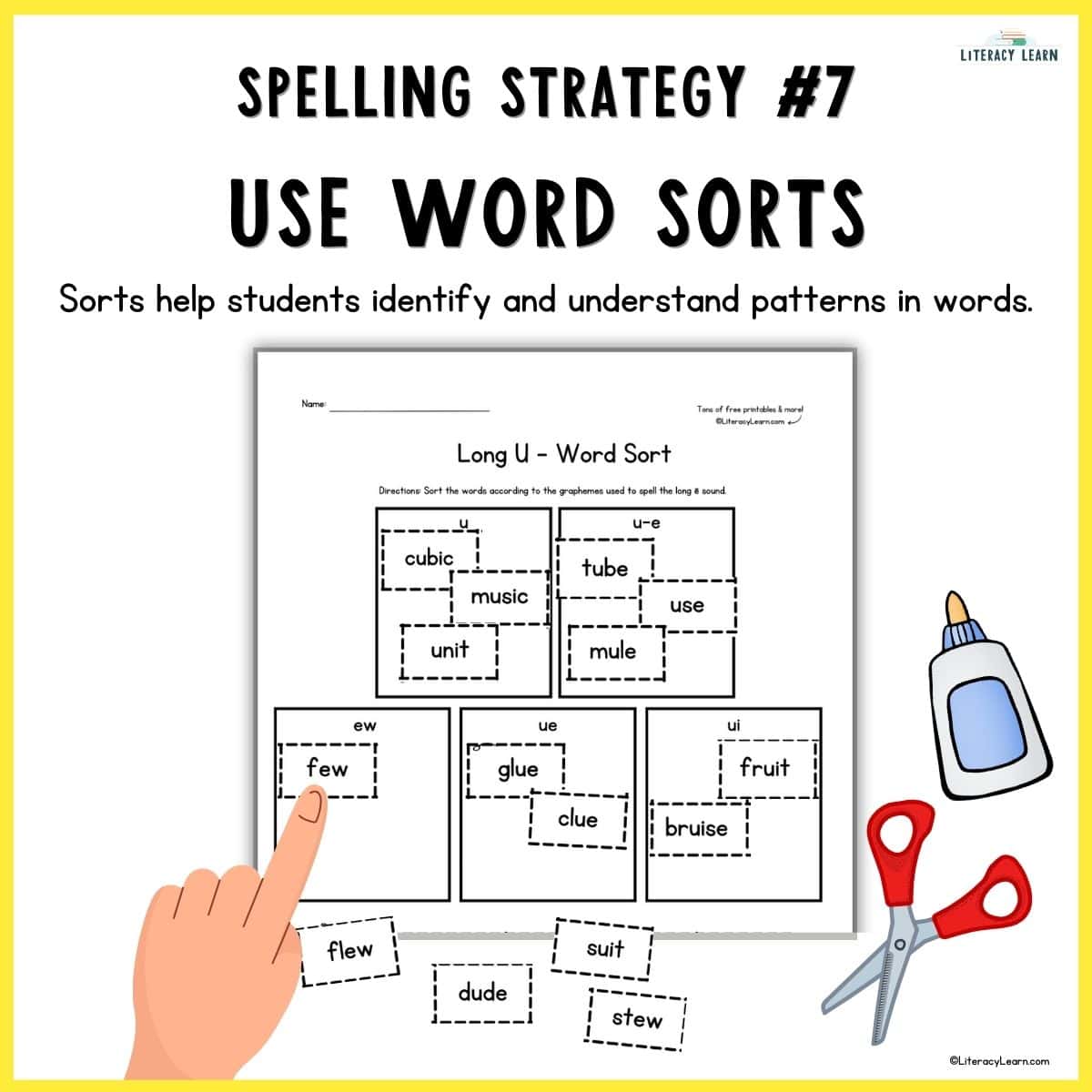
Because there are SO many different spelling patterns, word sorts are a great addition to your spelling instruction.
Working hands-on to complete these activities, word sorts help students focus on recognizing and organizing words according to different phonics and spelling patterns.
That means kids are moving beyond memorization and into real-world application.
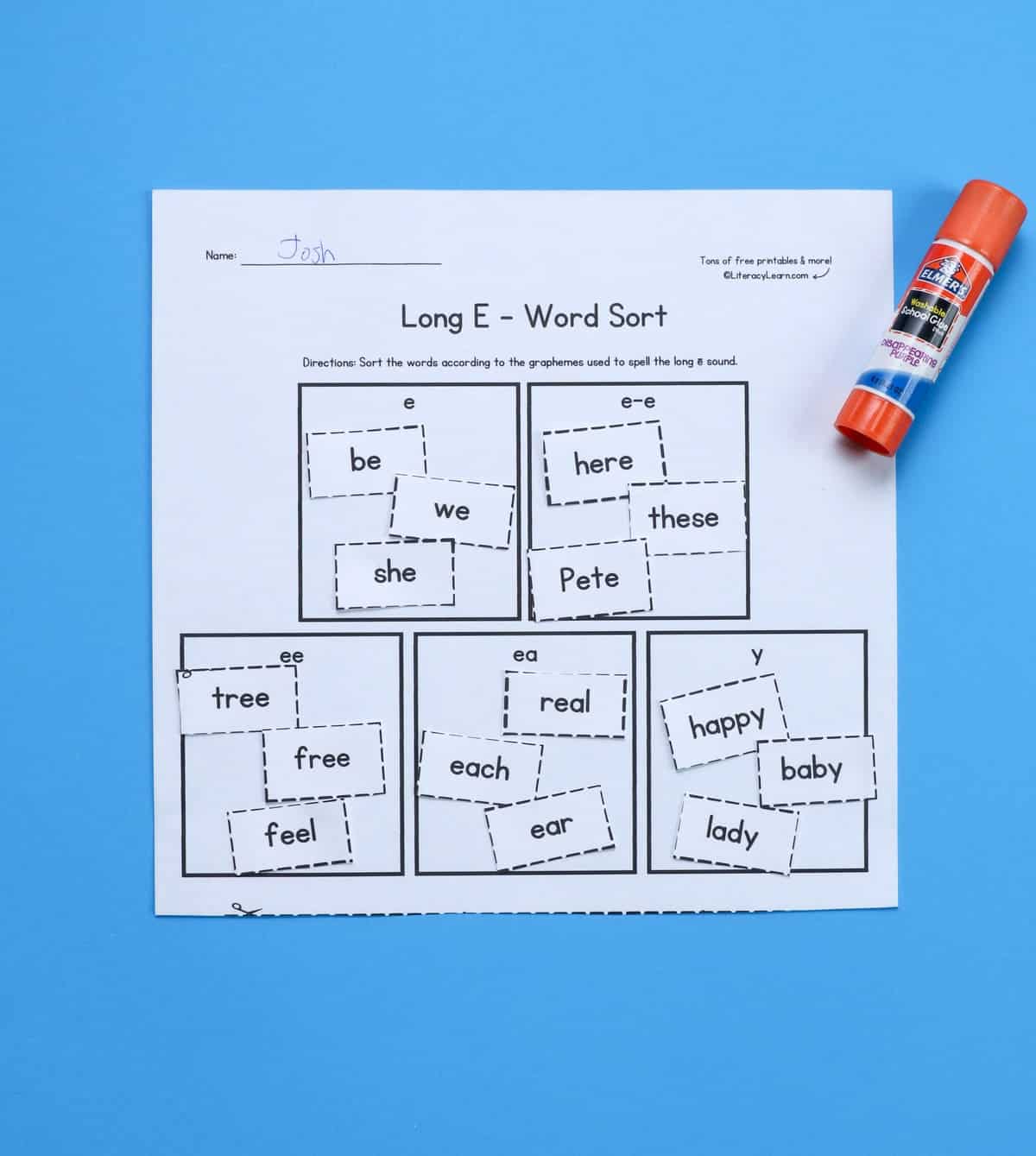
Get Freebies: Long E Words Sort (pictured), Long O Word Sort.
Further Learning & Help
Have you ever wondered why spelling is just so dang hard for some? That’s because it requires the coordination and juggling of multiple cognitive processes— memory, sound recognition, and rule application— all at the same time.
For students who struggle with spelling, one of the biggest challenges in spelling is mapping sounds to letters. English has 44 phonemes (individual sounds), but there are over 250 graphemes (letter combinations) used to spell them!
For example, the long e sound can be spelled in at least 8 different ways! That variety of spelling choices can make it tricky for students to determine which one to use.
This is especially difficult for students with dyslexia due to deficits in the phonological processing area of the dyslexic brain. That is why teaching kids these strategies is essential to helping them become successful readers and writers.
If you have a child who’s struggling, they need explicit, research-backed interventions. Take a free dyslexia screener today.

You can learn more about concepts discussed in this post. We also give away some great freebies, too:
🏫 Learn more about phonemes, graphemes, and morphemes.
💜 Check out more info about teaching using the the heart word method.
➕ Learn more about the power of morphology instruction.
📏 Read more about spelling rules, like the doubling rule and the dropping rule.
📝 Get a free spelling inventory to assess your students’ strengths and deficits.
What spelling strategies do your students find most helpful? Share in the comments below!

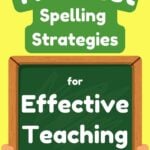
Very good post! We are linking to this great post on our
website. Keep up the great writing.
Thanks so much!
Kate & Laura